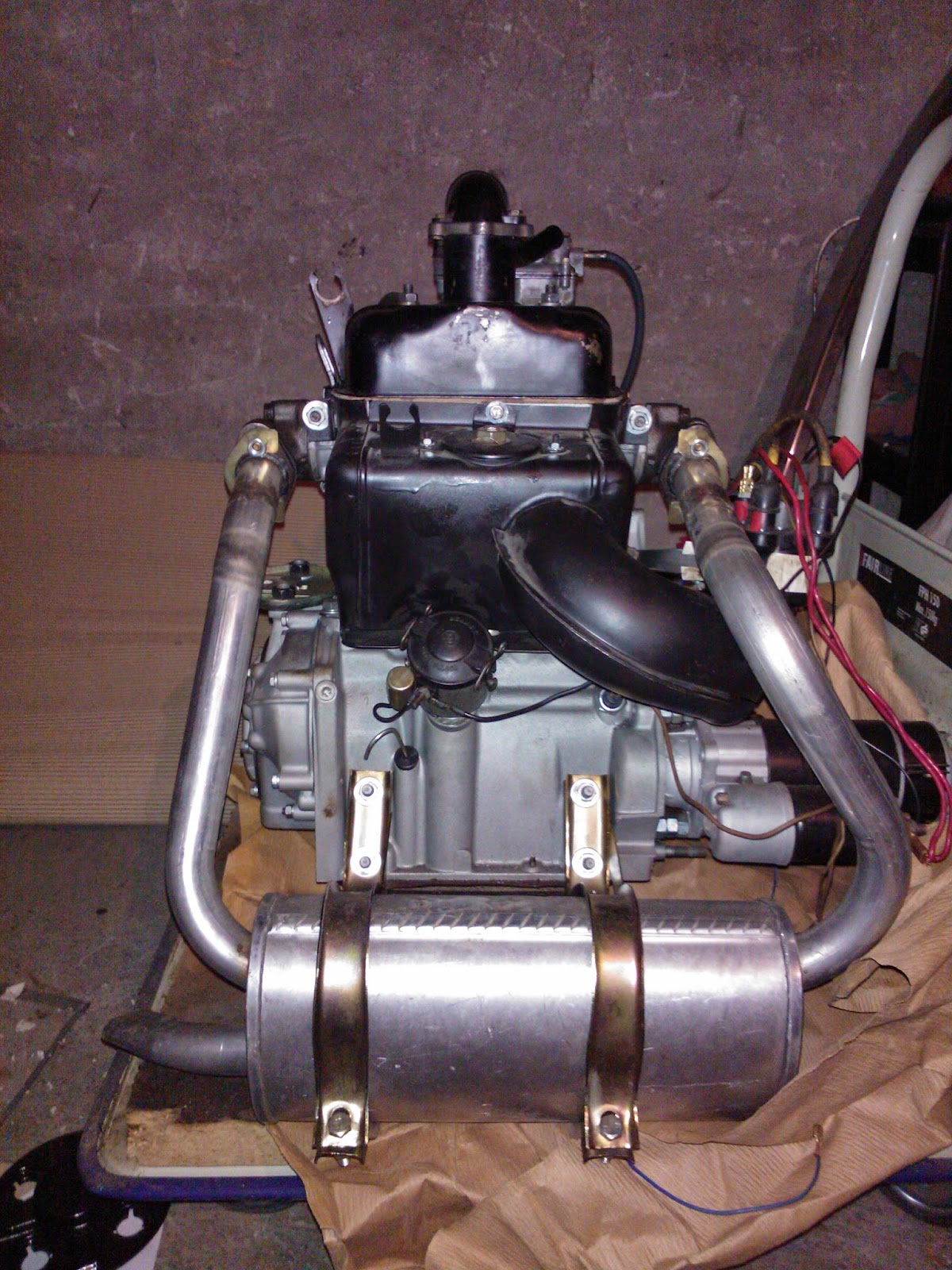 |
| Ilyen volt... |
Most már csak rajtam múlik, mikor áll lábra ismét János. Tegnap megkaptam az összerakott első féltengelyeket, a kengyellel, új csapszegekkel. Kicsit ütött-kopott lett a szépen lefestett felület, ahogy a dolgok a helyükre kerültek benne, de egy gyors maszkolás és javító fújásoknak hála 1 óra alatt ismét szépen pompáztak. Hagytam hogy félig megszáradjanak, és két órával később óvatosan be is szereltem.
 |
| ...és ilyen lett. |
Előtte, a múlt hétvégén hasonlóan javítófújkálással megpermetezett lengőkarokat raktam a helyükre, miután összeszereltem őket. Ott is kapott ugyanis még egy kicsit, ahogy a szemben lévő szilenteket a helyükre kalapáltam (sajnos ezeket már nem sikerült préselni, ahogy az elsőt). Az is nagyjából utána a karosszériához fogva száradt ki rendesen. De ahhoz hogy ez meg tudjam tenni, egy-két csavart, alátétet is be kellett
szereznem; nagy megelégedésemre megtaláltam a
Szögkert - amit csak ajánlani tudok-, ahol még zéger
gyűrűt is katam végre a kuplung pedál bowden rögzítéséhez, réz szigetelő alátéteket a fő fékmunkahenger csavarjaihoz, 10.9-es csavarokat a kengyel és lengőkar összekötéséhez, illetve a régóta szívató M12x1.5-ös anyákat.

Elkészült a motorblokk üveggyöngyözése is múlt péntekre, így azt is vittem utána a szerelőmnek, a közben beszerzett, új motoralkatrészekkel. Ideiglenesen a régi szelepfedelet rátettük, hogy a szelepemelőket, rugókat, stb. védje. Így az is szép fémszínű lett kívülről, amit hétvégén szintén lefújtam, de ezt már fekete hőállóval.
Belülről a szinter még tartott rajta, így azzal külön nem foglalkoztam. Tartaléknak jó lesz, most már nem fog tovább romlani az állapota, mondhatni újszerű lett.
A kárpitokat is előbányásztam, és elvittem a kedvenc autómosómba, hogy tisztítsák ki rendesen. Az ajtókárpitoknak, meg a hátsó kerékjárati ív feletti műanyagnak jómagam estem neki: egyik oldalról benzin, majd mindkét oldalról szappanos víz (inkább Ultradermes, a szerk.).
A kárpitok még mindig nem száradtak meg, mert különben hívtak volna, de az ajtót már legalább készre tudtam szerelni. A jobb oldalit. Mivel kiderült, hogy a bal oldalihoz hiányzik (törött) a kilincs alátét, illetve az ablakemelő alátét. hmm...
A szellőző rendszert is körbeszigeteltem, a boltban kapható ablakszigetelővel. Így már biztosan nem sok helyen fog szelelni a váltórudazat alagút, amíg előre nem ér a meleglevegő! :)
A motor oldalsó levegőbeszívójára pedig kísérlet képpen felpattintottam 2 réteg gézt: elvileg nem fogja nagyon akadályolzni a levegő áramlását, viszont a nagyobb méretű koszok/pókok motorba/ventillátorba jutását megakadályozza, így tiszta maradhat a motor. Annó ugyanis amikor szétszedtem, a blokkon kisméretű faleveleket, nyárfa termést, és hasonlókat találtam (a rengeteg pókhálón, és poron túl persze, ami mind az olajba beleragadtak, és odaégtek).
Tegnap már csak az első fékek összerakása és beállítása lett volna, de kiderült, hogy a régi fékmunkahengerek úgy beálltak, mint a szög! Mozdítani sem lehet a dugattyúkat, csupa rozsda az egész. Ígyhát ide teljesen újakat fogok tenni, remélem
báró-kernél van raktáron.
Ezen kívül persze még volt egy csomó apróság, mint pl.: szétszedtem, megpucoltam, és összerktam a korábban beszerzett króm visszapillantót, és felszereltem. Egy gumibelsőből vágtam neki alátétet, hogy a karosszériát ne birizgálja. Azt hiszem, nem tökéletes azért a dolog, mivel könnyen körbe tud fordulni sajnos.
A bemart profilú tartó rúd aláján a gömbhéj ellenlemez körbemarta a tengelyt. Ezzel nem tudom még mit fogok tudni kezdeni, mert látszólag a karral egybe van öntve.
A motorhoz tartozó egy-két elemet is lefújtam, mint pl a légterelő lemezt a csiga alá, illetve a váltót eltakaró pajzsot, készülve arra, hogy megérkezik végre valamikor mindkettő.

A kerekeket is újra elővettem, és nekiálltam pucolni őket, kettős céllal: a fényező elég trehányul takarta le, és a gumin is, illetve a felnin is a festék köd kicsapódott.
Sima suvickolással nem jött le, így legalább a külsejét újra kell fújnom majd. A gumin a feliratokat pedig fehér gumifestékkel ki fogom emelni.





















































